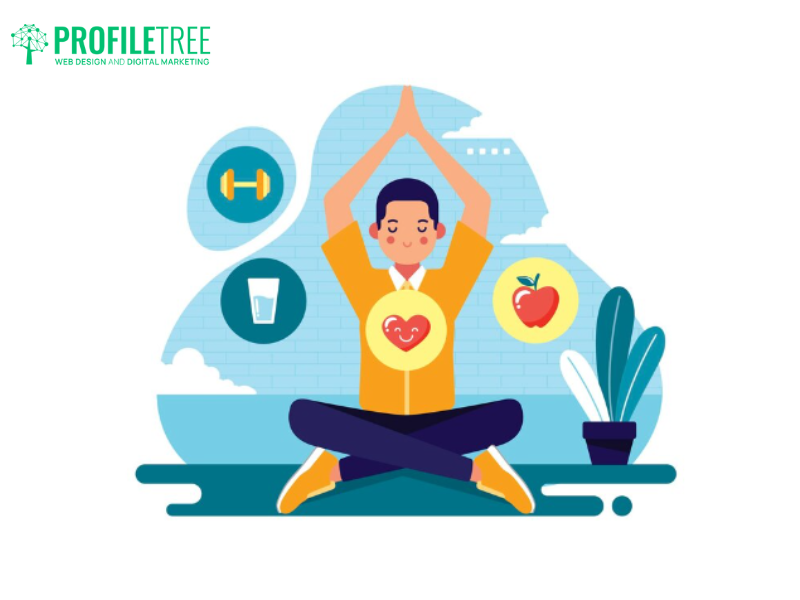In the fast-paced and ever-changing landscape of the modern workplace, making a harmonious balance between professional responsibilities and personal well-being has become an increasingly elusive goal for many. The relentless demands of work, coupled with the ubiquitous connectivity of the digital age, often blur the boundaries between the professional and the personal, leaving individuals grappling with the challenges of maintaining a satisfying work-life balance.
Consequently, the quest for a more balanced lifestyle has never been more crucial. Recognising the importance of a healthy equilibrium between career and personal life is not just a matter of individual well-being; it directly impacts productivity, job satisfaction, and overall quality of life. This is where practical strategies must be embraced to encourage individuals to reclaim control over their time and priorities.
In this article, we will delve into ten actionable and pragmatic approaches to make work-life balance not just a lofty ideal but rather a tangible reality. From fostering a culture of flexibility within the workplace to adopting effective time management techniques, we will explore the tools and mindset shifts that can pave the way for a more fulfilling and sustainable lifestyle.
So, bring along a cup of coffee, and let’s hop into it.
1. Understand Your Priorities

In the hustle and bustle of daily routines and professional obligations, it is easy to lose sight of what truly matters, and this is where self-reflection comes in handy to help individuals reconnect with their inner selves, identify and prioritise their core values, and gain clarity about their aspirations.
Self-reflection enables individuals to discern their core values—the fundamental principles and beliefs that shape their identity and guide decision-making. By contemplating personal experiences, successes, challenges, and moments of fulfilment, individuals can identify recurring themes and values that resonate deeply. This is absolutely necessary so they can align their life choices and actions with what is genuinely important for them, fostering a sense of authenticity and purpose.
This alignment can happen by asking essential questions about what truly brings fulfilment and satisfaction. Are career ambitions in harmony with personal aspirations? Are daily activities contributing to long-term objectives? By aligning goals with core values, individuals can create a roadmap that reflects their authentic selves, leading to a more meaningful and purposeful life.
This identification of which activities contribute positively to one’s goals and values and which may be draining or incongruent accordingly assesses how individuals allocate their time and energy. It prompts a critical examination of daily habits, commitments, and obligations, which aids in the prioritisation of tasks and relationships, consequently ensuring that energy is well utilised.
Mastering self-reflection gradually develops a clear sense of self, which is much needed in decision-making. When faced with choices, individuals who have a better understanding of themselves can evaluate options based on alignment with their values and long-term objectives. This clarity also reduces decision fatigue and eventually leads to making choices and decisions consistent with their authentic selves, fostering a sense of satisfaction and fulfilment.
Besides making good decisions, self-reflection also helps cultivate resilience, which is necessary during times of difficulties. By understanding their values and goals, individuals can weather challenges and setbacks more effectively, for it is their strong connection to their core values that give them the motivation and resilience necessary to bounce back and stay focused on their overarching life vision.
2. Set Realistic Expectations
Unrealistic expectations, whether at work or in personal life, often set the stage for stress and anxiety. When individuals set standards that are too high or anticipate outcomes that are beyond reach, the constant pressure to meet those expectations can lead to burnout. Realistic expectations, on the other hand, acknowledge the limitations and challenges inherent in any endeavour, promoting a more manageable and sustainable approach.
Realistic expectations contribute to a positive mindset by cultivating a sense of accomplishment and contentment. When goals and objectives are within reach, individuals are more likely to experience success and celebrate achievements. Such positive reinforcement not only boosts confidence but also encourages a more optimistic outlook, creating a cycle of motivation and productivity.
In the workplace, setting realistic expectations is crucial for professional success. Whether it is project timelines, workload management, or career advancement, aligning expectations with achievable outcomes promotes a more productive and efficient work environment. Realistic expectations also facilitate better collaboration among team members since everyone is on the same page regarding what can be realistically accomplished.
Yet, it is not limited to work. Setting realistic expectations is also vital for cultivating healthy connections with others. While unrealistic expectations can strain relationships as individuals may feel unmet demands or perceived shortcomings, realistic ones better allow for open communication, understanding, and mutual support, creating a foundation for stronger and more resilient relationships, which fosters work-life balance.
Realistic expectations also provide a framework for adaptability. Life is unpredictable, and challenges are inevitable. When expectations are grounded in reality, individuals are better equipped to adapt to unforeseen circumstances without feeling defeated. This adaptability is a valuable trait both in personal life and the professional realm, allowing for resilience in the face of change.
Likewise, ambition should be tempered with a sense of realism. Yet, be careful. Setting realistic expectations does not mean abandoning ambitious goals but rather involves breaking down larger objectives into smaller, more manageable steps. This approach enables individuals to make progress incrementally while avoiding the pitfalls of overwhelming expectations.
All of this contributes to overall well-being and creates the healthy work-life balance everyone is pursuing without sacrificing mental and physical health in the process.
3. Create a Structured Schedule

The third valuable strategy that helps with achieving a healthy work-life balance is creating a structured daily and weekly schedule. This tool is fantastic when it comes to managing time efficiently and prioritising tasks.
Here is a step-by-step guide to help you develop a structured schedule that suits your needs:
- Define Your Goals and Priorities: Identify your short-term and long-term goals, both professionally and personally. Determine your top priorities for each day and week, ensuring they align with your overarching objectives.
- Assess Your Time Commitments: Take stock of your existing commitments, including work hours, family responsibilities, and any recurring obligations. Consider how much time you realistically have available for other activities.
- Break Down Your Day: Divide your day into segments, considering natural breaks and energy levels. Allocate time for specific activities, such as work tasks, meals, exercise, and relaxation and incorporate short breaks between tasks to recharge.
- Factor in Buffer Time: Allow for buffer time between activities and tasks to account for any unexpected delays or transitions. Avoid back-to-back meetings or tasks to prevent feeling rushed.
- Utilise Technology: Explore scheduling tools and apps that can help you stay organised and set reminders. Leverage calendar applications to sync your schedule across devices.
- Communicate and Coordinate: If applicable, communicate your schedule with family members, colleagues, or anyone who may be affected by your routine. Coordinate shared responsibilities and commitments.
- Review, Adjust and Reflect: Regularly review your schedule to assess progress and adjust as needed. Be flexible and open to adapting your schedule based on changing priorities or unexpected events. Reflect on your accomplishments at the end of each day and week and celebrate successes.
4. Embrace Time Management Techniques

Effective time management is pretty much the cornerstone of productivity and achieving a work-life balance. Various techniques can help individuals make the most of their time, enhance focus, and prioritise tasks. So, let’s explore three popular time management techniques: the Pomodoro Technique, time blocking, and prioritisation.
Pomodoro Technique
The Pomodoro Technique, developed by Francesco Cirillo, is a famous time management approach that uses a timer to divide work into cycles, traditionally 25 minutes long, separated by short breaks. This technique evidently fosters focus and concentration by breaking work into manageable, timed intervals. It also prevents burnout and maintains energy levels through regular breaks, encouraging a sense of urgency and promoting efficient work.
Using the Pomodoro Technique is pretty straightforward. Sit down at your desk and adjust your timer to 25 minutes. Work on a certain task till the timer goes off, then take a five-minute break. Get away from the desk, stretch, get a drink, or do anything to recharge, then come back and repeat the same thing. After completing four cycles, take a more extended break of 15 to 30 minutes.
Time Blocking
Another excellent productivity technique is time blocking. It incorporates scheduling specific blocks of time for different tasks or activities throughout the day, creating a structured and organised approach to time management. This technique minimises multitasking, enhances focus and efficiency, helps prioritise important tasks, and prevents procrastination.
When applying time blocking, it is important to allocate realistic time frames for each task. Avoid overloading your schedule and leave room for unexpected events. Group similar tasks together in the same time block to enhance efficiency by minimising context switching. You should also integrate short breaks between time blocks to rest, recharge, and avoid burnout.
Most importantly, for this technique to work, you actually have to stick to your schedule and commit to following your time blocks. Do your best to resist the urge to deviate from the schedule unless absolutely necessary. When you are done with the tasks for the day, assess the effectiveness of the time-blocking strategy and adjust your approach according to what works best for you.
Prioritisation
Prioritisation is a fundamental time management skill that involves identifying and ranking tasks based on their importance and urgency. It ensures that the most important tasks are addressed promptly, which, in return, reduces the likelihood of feeling overwhelmed. Individuals can maximise productivity by focusing on tasks that align with overarching goals.
Doing this is pretty simple. All there is to do is create a list of tasks that you need to accomplish and assess each task’s importance and urgency. Prioritise these tasks based on their impact and deadlines, then start by tackling high-priority tasks first before moving on to lower-priority ones.
5. Implement Healthy Work Boundaries
In a world where technology allows constant connectivity, the distinction between professional and personal life can become blurred. Recognising and maintaining these boundaries is essential for several reasons:
- Prevention of Burnout: Clear boundaries act as a safeguard against burnout by allowing time for rest and leisure. This helps recharge mental and emotional energy, reducing the risk of burnout.
- Promotion of Mental Health: As continuous exposure to work-related stressors without a clear separation can result in mental health challenges like mood swings, anxiety, and depression, personal time provides an opportunity for relaxation, hobbies, and activities that contribute to positive mental well-being.
- Enhanced Productivity and Focus: Establishing specific work hours and personal hours helps individuals allocate time effectively. When at work, focus is directed towards tasks without personal distractions, leading to increased productivity. Similarly, personal time allows for undivided attention to non-work-related activities.
- Improved Work-Life Balance: Maintaining clear boundaries contributes to a healthier work-life balance, allowing individuals to allocate time to family, friends, and personal interests. A balanced life fosters contentment and reduces stress associated with neglecting personal relationships and self-care.
Here are a few strategies to set healthy work boundaries:
- Set specific work hours and stick to them as closely as possible. Clearly communicate your work hours to colleagues, clients, and family members and set expectations regarding response times for emails and messages.
- If working from home, designate a specific area for work to create a clear physical boundary between your professional and personal life. This helps you mentally “leave” work when you step away from your workspace.
- Learn to say no by politely declining extra tasks or projects when your plate is already full. Prioritise and focus on the most important tasks.
- Consider turning off work-related notifications outside of your designated work hours. This helps prevent constant interruptions and allows you to be fully present during personal time.
- Resist the temptation to work excessively long hours regularly and prioritise a healthy work-life balance for sustained productivity and well-being.
- Delegate tasks when appropriate, both at work and in personal responsibilities. Recognise that you do not have to do everything yourself.
6. Prioritise Self-Care Practices

Living in such a fast-paced and demanding world makes it absolutely necessary for individuals to take care of themselves, physically and mentally. Let’s explore some essentials of well-being and work-life balance that should never be compromised under any condition.
Exercise and Adequate Sleep
Regular exercising is the basis of self-care, offering several health benefits, including better cardiovascular health, increased energy levels, and enhanced mood. Engaging in activities such as mindful walking, jogging, or yoga not only contributes to physical fitness but also stands as a potent stress reliever.
Exercise also helps with getting quality sleep, which is crucial for cognitive function, emotional resilience, and overall health. Building a consistent sleep routine, creating a comfortable sleep environment, and prioritising sufficient sleep duration contribute to enhanced well-being.
Mindfulness and self-Compassion
Mindfulness cultivates a heightened awareness and presence in the present moment. By fostering a non-judgemental focus on thoughts, emotions, and sensations, mindfulness can reduce stress, enhance emotional regulation, and improve mental clarity. It has also been associated with various health benefits, on top of which are lower blood pressure, improved immune function, and high-quality sleep. Mindfulness also contributes to better mental health outcomes, such as reduced symptoms of anxiety and even depression.
That is why it is crucial for individuals to incorporate mindfulness practices within their daily routine. This can be anything from meditation, mindful breathing, taking a mindful walk and paying attention to each step while focusing on the sensation of movement, mindful eating, observing thoughts, journaling, or yoga.
Self-Compassion
Simply put, self-compassion is this practice when we treat ourselves with kindness, understanding, and acceptance, particularly in the face of challenges, failures, or shortcomings. It involves acknowledging one’s own suffering without harsh judgement and responding to oneself with the same care and support that one might offer to a friend.
Self-compassion encompasses three main components: self-kindness, common humanity, and mindfulness. By fostering a compassionate attitude towards oneself, individuals develop resilience, emotional well-being, and a healthier self-image. It provides a protective buffer against self-criticism, reduces stress, and promotes mental and emotional stability, ultimately contributing to a more positive and adaptive approach to life’s difficulties.
Embracing self-compassion enables individuals to navigate setbacks with greater ease and cultivates a foundation for personal growth and self-improvement.
Connection with Others
Building and maintaining meaningful relationships is a pivotal aspect of self-care and a fundamental component of a healthy work-life balance.
Human beings are, by default, social creatures, and meaningful connections contribute significantly to overall well-being. Social connections provide emotional support, reducing stress and promoting mental health. Interpersonal relationships especially offer a sense of belonging and purpose, combating feelings of loneliness and isolation.
Positive connections with others also foster empathy, understanding, and a shared sense of community, contributing to a more compassionate and cooperative society.
That being said, maintaining good connections with others requires consistent efforts to stay engaged through regular conversations, shared activities, and meaningful interactions. Actively listening to others, expressing empathy, and being present in both joyful and challenging moments fosters a deeper understanding and connection.
Building trust, showing appreciation, and celebrating each other’s successes also contribute to the strength of relationships. Regular check-ins, whether through calls, texts, or face-to-face meetings, help sustain connections and ensure that individuals feel valued and connected. Ultimately, investing time, effort, and authenticity in relationships is key to fostering and maintaining solid and fulfilling connections with others.
Conclusion
As we conclude, it is crucial to recognise that work-life balance is not a static destination but a continuous journey marked by periodic reassessments, adjustments, and celebrations of progress. It is about aligning our daily actions with our deepest values and priorities and, in doing so, creating a life that is fulfilling, purposeful, and harmonious.
In this journey towards work-life balance, we have explored a myriad of strategies—from effective time management and open communication to implementing clear boundaries and practising self-care. It is evident that the pursuit of balance is not a one-size-fits-all endeavour; instead, it is a dynamic process that requires introspection, resilience, and an ongoing commitment to personal growth.


